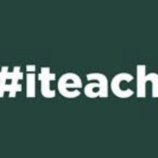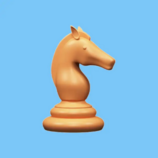We found 7 results that contain "iteachmsu"
Posted on: #iteachmsu


Why are my cholesterol numbers important? AdditionLLY Added https://iteachmsu.venturit.org/
https://iteachmsu.venturit.org/ Your cholesterol numbers are important because they help you know your risk for heart disease. Cholesterol is a type of lipid (fat) that helps your body perform many important functions. But too much cholesterol in your blood is bad for you. It can enter your artery wall, damage its integrity and lead to the formation of atherosclerotic plaque (hardened deposits).
This process of plaque buildup is called atherosclerosis. It can lead to serious problems like:
Coronary artery disease: Blocked blood flow to your heart.
Peripheral artery disease: Blocked blood flow to your legs and arms.
Carotid artery disease: Blocked blood flow to your brain.
Cholesterol travels through your blood silently. And it turns into plaque silently. Plaque buildup is like someone tip-toeing on carpet. You might not see or notice its presence for a long time. You may have no symptoms until you have a heart attack or stroke. At that point, the plaque is like high heels on a hardwood floor. And it’s already caused serious damage to your body.
You can live for many years with high cholesterol and not even know it. That’s why it’s essential to get your cholesterol numbers checked on a regular basis. If your cholesterol numbers are too high (hyperlipidemia), that’s a red flag for you and your healthcare provider. High cholesterol is a major risk factor for heart disease. But catching it early gives you a chance to make changes and get your cholesterol to a healthy level.
This process of plaque buildup is called atherosclerosis. It can lead to serious problems like:
Coronary artery disease: Blocked blood flow to your heart.
Peripheral artery disease: Blocked blood flow to your legs and arms.
Carotid artery disease: Blocked blood flow to your brain.
Cholesterol travels through your blood silently. And it turns into plaque silently. Plaque buildup is like someone tip-toeing on carpet. You might not see or notice its presence for a long time. You may have no symptoms until you have a heart attack or stroke. At that point, the plaque is like high heels on a hardwood floor. And it’s already caused serious damage to your body.
You can live for many years with high cholesterol and not even know it. That’s why it’s essential to get your cholesterol numbers checked on a regular basis. If your cholesterol numbers are too high (hyperlipidemia), that’s a red flag for you and your healthcare provider. High cholesterol is a major risk factor for heart disease. But catching it early gives you a chance to make changes and get your cholesterol to a healthy level.
NAVIGATING CONTEXT
Posted on: #iteachmsu

About
Teaching Commons: “an emergent conceptual space for exchange and community among faculty, students, and all others committed to learning as an essential activity of life in contemporary democratic society” (Huber and Hutchings, 2005, p.1) What Is the #iteachmsu Commons? You teach MSU. We, the Academic Advancement Network, The Graduate School, and The Hub for Innovation in Learning and Technology, believe that a wide educator community (faculty, TAs, ULAs, instructional designers, academic advisors, et al.) makes learning happen across MSU. But, on such a large campus, it can be difficult to fully recognize and leverage this community’s teaching and learning innovations. To address this challenge, the #iteachmsu Commons provides an educator-driven space for sharing teaching resources, connecting across educator networks, and growing teaching practice. #iteachmsu Commons content may be discipline-specific or transdisciplinary, but will always be anchored in teaching competency areas. You will find blog posts, curated playlists, educator learning module pathways, and a campus-wide teaching and learning events calendar. We cultivate this commons across spaces. And through your engagement, we will continue to nurture a culture of teaching and learning across MSU and beyond. How Do I Contribute to the #iteachmsu Commons? Content is organized by posts, playlists and pathways.
Posts: Posts are shorter or longer-form blog postings about teaching practice(s), questions for the educator community, and/or upcoming teaching and learning events. With an MSU email address and free account signup, educators can immediately contribute blog posts and connected media (e.g. handouts, slide decks, class activity prompts, promotional materials). All educators at MSU are welcome to use and contribute to #iteachmsu. And there are no traditional editorial calendars. Suggested models of posts can be found here.
Playlists: Playlists are groupings of posts curated by individual educators and the #iteachmsu community. Playlists allow individual educators to tailor their development and community experiences based on teaching competency area, interest, and/or discipline.
Pathways: Pathways are groupings of educator learning modules curated by academic and support units for badges and other credentialing.
There are two ways to add your contribution to the space:
Contribute existing local resources for posts and pathways: Your unit, college, and/or department might already have educator development resources that could be of use to the wider MSU teaching and learning community. These could be existing blog posts on teaching practice, teaching webinars, and/or open educational resources (e.g classroom assessments, activities). This content will make up part of the posts, playlists, and pathways on this site. Educators can then curate these posts into playlists based on their individual interests. Please make sure to have permission to share this content on a central MSU web space.
Contribute new content for posts: A strength of the #iteachmsu Commons is that it immediately allows educators to share teaching resources, questions and events through posts to the entire community. Posts can take a variety of forms and are organized by teaching competency area categories, content tags, date, and popularity. Posts can be submitted by both individual educators and central units for immediate posting but must adhere to #iteachmsu Commons community guidelines. Posts could be:
About your teaching practice(s): You discuss and/or reflect on the practices you’re using in your teaching. In addition to talking about your ideas, successes, and challenges, we hope you also provide the teaching materials you used (sharing the assignment, slidedeck, rubric, etc.)
Responses to teaching ideas across the web or social media: You share your thoughts about teaching ideas they engage with from other media across the web (e.g. blog posts, social media posts, etc.).
Cross-posts from other teaching-related blogs that might be useful for the #iteachmsu community: You cross-post content from other teaching-related blogs they feel might be useful to the #iteachmsu community.
About teaching-related events: You share upcoming teaching related events as well as their thoughts about ideas they engage with events at MSU and beyond (e.g. workshops, conferences, etc.). If these events help you think in new ways about your practice, share them with the #iteachmsu community.
Questions for our community: You pose questions via posts to the larger community to get ideas for their practice and connect with others considering similar questions.
What Are the #iteachmsu Commons Policies?Part of the mission of the #iteachmsu Commons is to provide space for sharing, reflecting, and learning for all educators on our campus wherever they are in their teaching development. The commons is designed to encourage these types of interactions and reflect policies outlined by the MSU Faculty Senate. We maintain the right to remove any post that violates guidelines as outlined here and by MSU. To maintain a useful and safer commons, we ask that you:
Follow the MSU Guidelines for Social Media.
Engage across the #iteachmsu commons in a civil and respectful manner. Content may be moderated in accordance with the MSU Guidelines for Social Media.
Do not share private or confidential information via shared content on the #iteachmsu Commons.
Content posted on the #iteachmsu Commons is licensed under a Creative Commons Attribution-NonCommercial-ShareAlike 4.0 International license. Learn more about this licensing here. Posted comments, images, etc. on the #iteachmsu Commons do not necessarily represent the views of Michigan State University or the #iteachmsu Commons Team. Links to external, non-#iteachmsu Commons content do not constitute official endorsement by, or necessarily represent the views of, the #iteachmsu Commons or Michigan State University. What if I Have #iteachmsu Commons Questions and/or Feedback?If you have any concerns about #iteachmsu Commons content, please email us at iteach@msu.edu. We welcome all feedback and thank you for your help in promoting a safer, vibrant and respectful community.
Posts: Posts are shorter or longer-form blog postings about teaching practice(s), questions for the educator community, and/or upcoming teaching and learning events. With an MSU email address and free account signup, educators can immediately contribute blog posts and connected media (e.g. handouts, slide decks, class activity prompts, promotional materials). All educators at MSU are welcome to use and contribute to #iteachmsu. And there are no traditional editorial calendars. Suggested models of posts can be found here.
Playlists: Playlists are groupings of posts curated by individual educators and the #iteachmsu community. Playlists allow individual educators to tailor their development and community experiences based on teaching competency area, interest, and/or discipline.
Pathways: Pathways are groupings of educator learning modules curated by academic and support units for badges and other credentialing.
There are two ways to add your contribution to the space:
Contribute existing local resources for posts and pathways: Your unit, college, and/or department might already have educator development resources that could be of use to the wider MSU teaching and learning community. These could be existing blog posts on teaching practice, teaching webinars, and/or open educational resources (e.g classroom assessments, activities). This content will make up part of the posts, playlists, and pathways on this site. Educators can then curate these posts into playlists based on their individual interests. Please make sure to have permission to share this content on a central MSU web space.
Contribute new content for posts: A strength of the #iteachmsu Commons is that it immediately allows educators to share teaching resources, questions and events through posts to the entire community. Posts can take a variety of forms and are organized by teaching competency area categories, content tags, date, and popularity. Posts can be submitted by both individual educators and central units for immediate posting but must adhere to #iteachmsu Commons community guidelines. Posts could be:
About your teaching practice(s): You discuss and/or reflect on the practices you’re using in your teaching. In addition to talking about your ideas, successes, and challenges, we hope you also provide the teaching materials you used (sharing the assignment, slidedeck, rubric, etc.)
Responses to teaching ideas across the web or social media: You share your thoughts about teaching ideas they engage with from other media across the web (e.g. blog posts, social media posts, etc.).
Cross-posts from other teaching-related blogs that might be useful for the #iteachmsu community: You cross-post content from other teaching-related blogs they feel might be useful to the #iteachmsu community.
About teaching-related events: You share upcoming teaching related events as well as their thoughts about ideas they engage with events at MSU and beyond (e.g. workshops, conferences, etc.). If these events help you think in new ways about your practice, share them with the #iteachmsu community.
Questions for our community: You pose questions via posts to the larger community to get ideas for their practice and connect with others considering similar questions.
What Are the #iteachmsu Commons Policies?Part of the mission of the #iteachmsu Commons is to provide space for sharing, reflecting, and learning for all educators on our campus wherever they are in their teaching development. The commons is designed to encourage these types of interactions and reflect policies outlined by the MSU Faculty Senate. We maintain the right to remove any post that violates guidelines as outlined here and by MSU. To maintain a useful and safer commons, we ask that you:
Follow the MSU Guidelines for Social Media.
Engage across the #iteachmsu commons in a civil and respectful manner. Content may be moderated in accordance with the MSU Guidelines for Social Media.
Do not share private or confidential information via shared content on the #iteachmsu Commons.
Content posted on the #iteachmsu Commons is licensed under a Creative Commons Attribution-NonCommercial-ShareAlike 4.0 International license. Learn more about this licensing here. Posted comments, images, etc. on the #iteachmsu Commons do not necessarily represent the views of Michigan State University or the #iteachmsu Commons Team. Links to external, non-#iteachmsu Commons content do not constitute official endorsement by, or necessarily represent the views of, the #iteachmsu Commons or Michigan State University. What if I Have #iteachmsu Commons Questions and/or Feedback?If you have any concerns about #iteachmsu Commons content, please email us at iteach@msu.edu. We welcome all feedback and thank you for your help in promoting a safer, vibrant and respectful community.
Posted by: Scarlet Ethan Edien
Posted on: #iteachmsu


Getting Started
What is the #iteachmsu Commons?
Welcome to the #iteachmsu Commons
You teach MSU. We, the Academic Advancement Network, The Graduate School, and The Hub for Innovation in Learning and Technology, believe that a wide educator community (faculty, TAs, ULAs, instructional designers, academic advisors, et al.) makes learning happen across MSU. But, on such a large campus, it can be difficult to fully recognize and leverage this community’s teaching and learning innovations. To address this challenge, the #iteachmsu Commons provides an educator-driven space for sharing teaching resources, connecting across educator networks, and growing teaching practice.
#iteachmsu Commons content may be discipline-specific or transdisciplinary, but will always be anchored in teaching competency areas. You will find short posts, blog-like articles, curated playlists, and a campus-wide teaching and learning events calendar. We cultivate this commons across spaces. And through your engagement, we will continue to nurture a culture of teaching and learning across MSU and beyond.
How to login
To begin creating content of your own on the #iteachmsu Commons, simply click the green Login button in the upper right hand corner of the screen. Your account will automatically be provisioned after successfully logging into the MSU Net ID login prompt. Currently, only authenticated MSU faculty, staff and students can create content on the #iteachmsu Commons. However, external users are free to browse and share public facing content without logging into the site.
Where to start
If you are looking for brief instructive videos on the core functionality of the site, take a look at our Getting Started playlist. After viewing each one of the video tutorials on the playlist, you will receive a Contributor badge which will display on your profile
What Are the #iteachmsu Commons Policies?
Part of the mission of the #iteachmsu Commons is to provide space for sharing, reflecting, and learning for all educators on our campus wherever they are in their teaching development. The commons is designed to encourage these types of interactions and reflect policies outlined by the MSU Faculty Senate. We maintain the right to remove any post that violates guidelines as outlined here and by MSU. To maintain a useful and safer commons, we ask that you:
Follow the MSU Guidelines for Social Media.
Engage across the #iteachmsu commons in a civil and respectful manner. Content may be moderated in accordance with the MSU Guidelines for Social Media.Do not share private or confidential information via shared content on the #iteachmsu Commons.
Content posted on the #iteachmsu Commons is licensed under a Creative Commons Attribution-NonCommercial-ShareAlike 4.0 International license. Learn more about this licensing here. Posted comments, images, etc. on the #iteachmsu Commons do not necessarily represent the views of Michigan State University or the #iteachmsu Commons Team. Links to external, non-#iteachmsu Commons content do not constitute official endorsement by, or necessarily represent the views of, the #iteachmsu Commons or Michigan State University.
Other important policies:
MSU's Web Accessibility Statement
MSU's Privacy Statement
What if I Have #iteachmsu Commons Questions and/or Feedback?
If you have any concerns about #iteachmsu Commons content, please email us at iteach@msu.edu. We welcome all feedback and thank you for your help in promoting a safer, vibrant and respectful community.
Stay up to date with the #iteachmsu Digest
Welcome to the #iteachmsu Commons
You teach MSU. We, the Academic Advancement Network, The Graduate School, and The Hub for Innovation in Learning and Technology, believe that a wide educator community (faculty, TAs, ULAs, instructional designers, academic advisors, et al.) makes learning happen across MSU. But, on such a large campus, it can be difficult to fully recognize and leverage this community’s teaching and learning innovations. To address this challenge, the #iteachmsu Commons provides an educator-driven space for sharing teaching resources, connecting across educator networks, and growing teaching practice.
#iteachmsu Commons content may be discipline-specific or transdisciplinary, but will always be anchored in teaching competency areas. You will find short posts, blog-like articles, curated playlists, and a campus-wide teaching and learning events calendar. We cultivate this commons across spaces. And through your engagement, we will continue to nurture a culture of teaching and learning across MSU and beyond.
How to login
To begin creating content of your own on the #iteachmsu Commons, simply click the green Login button in the upper right hand corner of the screen. Your account will automatically be provisioned after successfully logging into the MSU Net ID login prompt. Currently, only authenticated MSU faculty, staff and students can create content on the #iteachmsu Commons. However, external users are free to browse and share public facing content without logging into the site.
Where to start
If you are looking for brief instructive videos on the core functionality of the site, take a look at our Getting Started playlist. After viewing each one of the video tutorials on the playlist, you will receive a Contributor badge which will display on your profile
What Are the #iteachmsu Commons Policies?
Part of the mission of the #iteachmsu Commons is to provide space for sharing, reflecting, and learning for all educators on our campus wherever they are in their teaching development. The commons is designed to encourage these types of interactions and reflect policies outlined by the MSU Faculty Senate. We maintain the right to remove any post that violates guidelines as outlined here and by MSU. To maintain a useful and safer commons, we ask that you:
Follow the MSU Guidelines for Social Media.
Engage across the #iteachmsu commons in a civil and respectful manner. Content may be moderated in accordance with the MSU Guidelines for Social Media.Do not share private or confidential information via shared content on the #iteachmsu Commons.
Content posted on the #iteachmsu Commons is licensed under a Creative Commons Attribution-NonCommercial-ShareAlike 4.0 International license. Learn more about this licensing here. Posted comments, images, etc. on the #iteachmsu Commons do not necessarily represent the views of Michigan State University or the #iteachmsu Commons Team. Links to external, non-#iteachmsu Commons content do not constitute official endorsement by, or necessarily represent the views of, the #iteachmsu Commons or Michigan State University.
Other important policies:
MSU's Web Accessibility Statement
MSU's Privacy Statement
What if I Have #iteachmsu Commons Questions and/or Feedback?
If you have any concerns about #iteachmsu Commons content, please email us at iteach@msu.edu. We welcome all feedback and thank you for your help in promoting a safer, vibrant and respectful community.
Stay up to date with the #iteachmsu Digest
Authored by: Admin #iteachmsu
Navigating Context
Posted on: #iteachmsu


What is Attention Deficit Hyperactivity Disorder?The diagnostic term attention deficit/hyperactivity
Classroom Interventions for Attention Deficit/ Hyperactivity Disorder Considerations Packet
Primer text from The College of William & MaryADHD is one of the most commonly diagnosed conditions of children (Centers for DiseaseControl and Prevention, 2015).
In a 2016 Centers for Disease Control and Prevention study, scientists found that 6.1 million children aged 2-17 years living in the U.S. had been diagnosed with attention-deficit/hyperactivity disorder (ADHD), which is similar to previous en
Ages 6-11: Approximately 2.4 million children
Ages 12-17: Approximately 3.3 million children
The diagnostic term attention deficit/hyperactivity disorder (ADHD) refers to individuals who display patterns of inattention, impulsivity, and overactive behavior that interfere with daily functioning (American Psychiatric Association [APA], 2013).
The Diagnostic and Statistical Manual (DSM) V (APA, 2013) criteria for diagnosing ADHD listthree types of ADHD and the accompanying characteristics.
Primer text from The College of William & MaryADHD is one of the most commonly diagnosed conditions of children (Centers for DiseaseControl and Prevention, 2015).
In a 2016 Centers for Disease Control and Prevention study, scientists found that 6.1 million children aged 2-17 years living in the U.S. had been diagnosed with attention-deficit/hyperactivity disorder (ADHD), which is similar to previous en
Ages 6-11: Approximately 2.4 million children
Ages 12-17: Approximately 3.3 million children
The diagnostic term attention deficit/hyperactivity disorder (ADHD) refers to individuals who display patterns of inattention, impulsivity, and overactive behavior that interfere with daily functioning (American Psychiatric Association [APA], 2013).
The Diagnostic and Statistical Manual (DSM) V (APA, 2013) criteria for diagnosing ADHD listthree types of ADHD and the accompanying characteristics.
Authored by: The diagnostic term attention deficit/hyperactivity disorder (ADHD) refers t, impulsivity, and overactive behavior that interfere with daily functioning (American Psychiatric Association [APA], 2013).
Disciplinary Content






